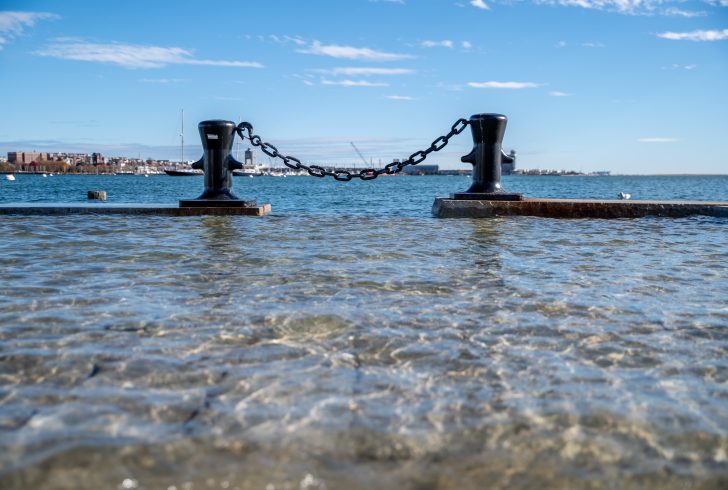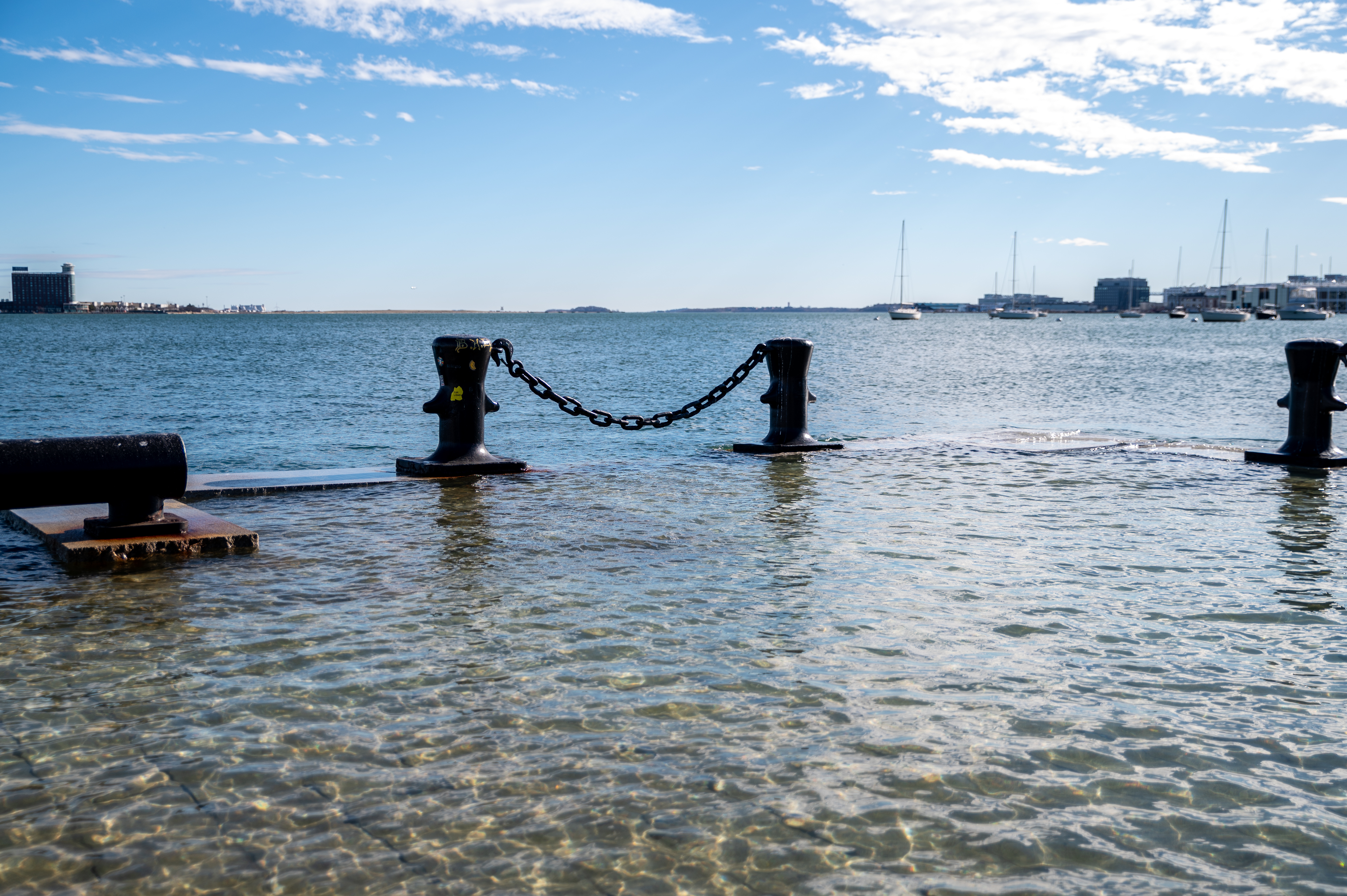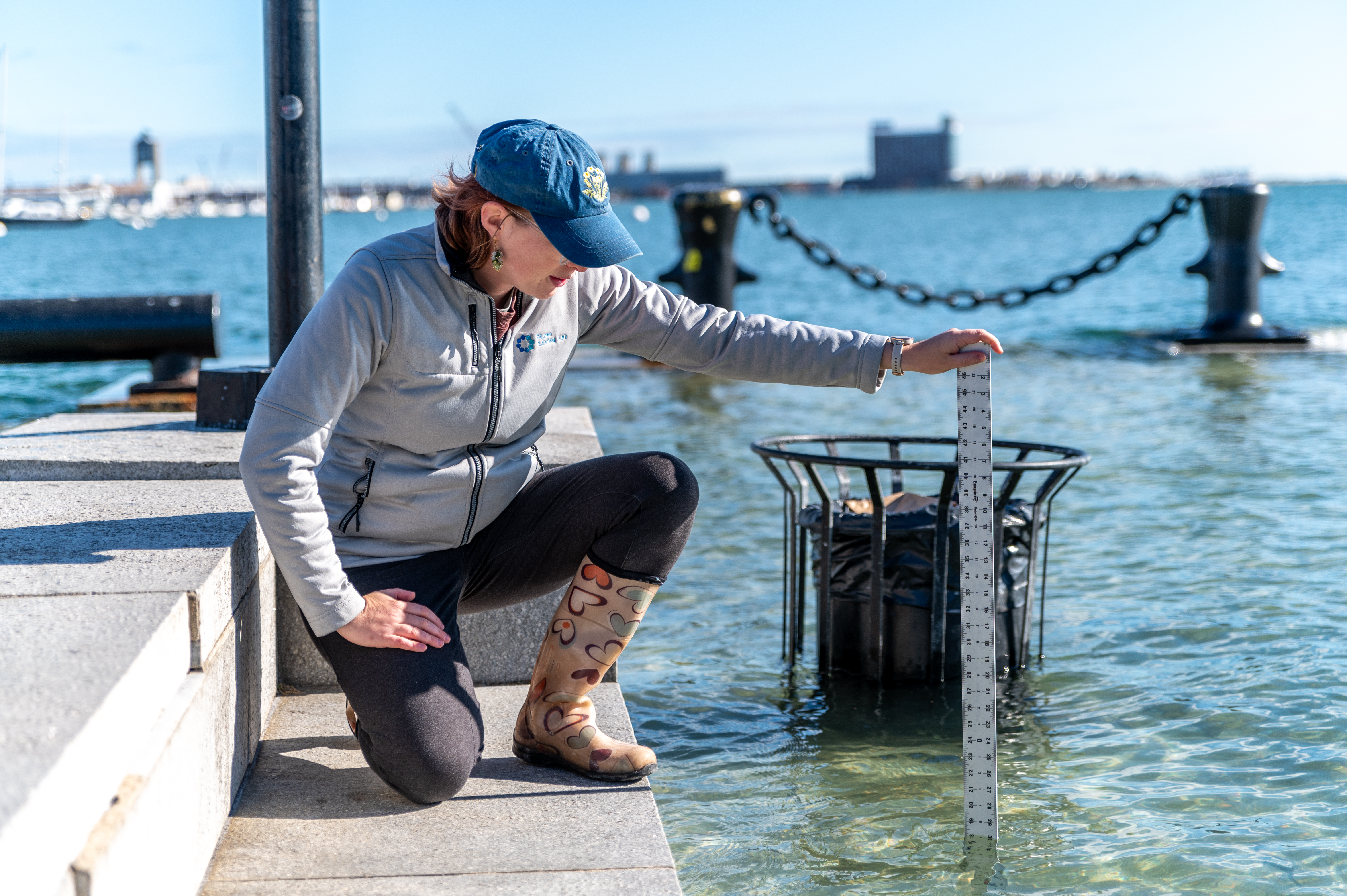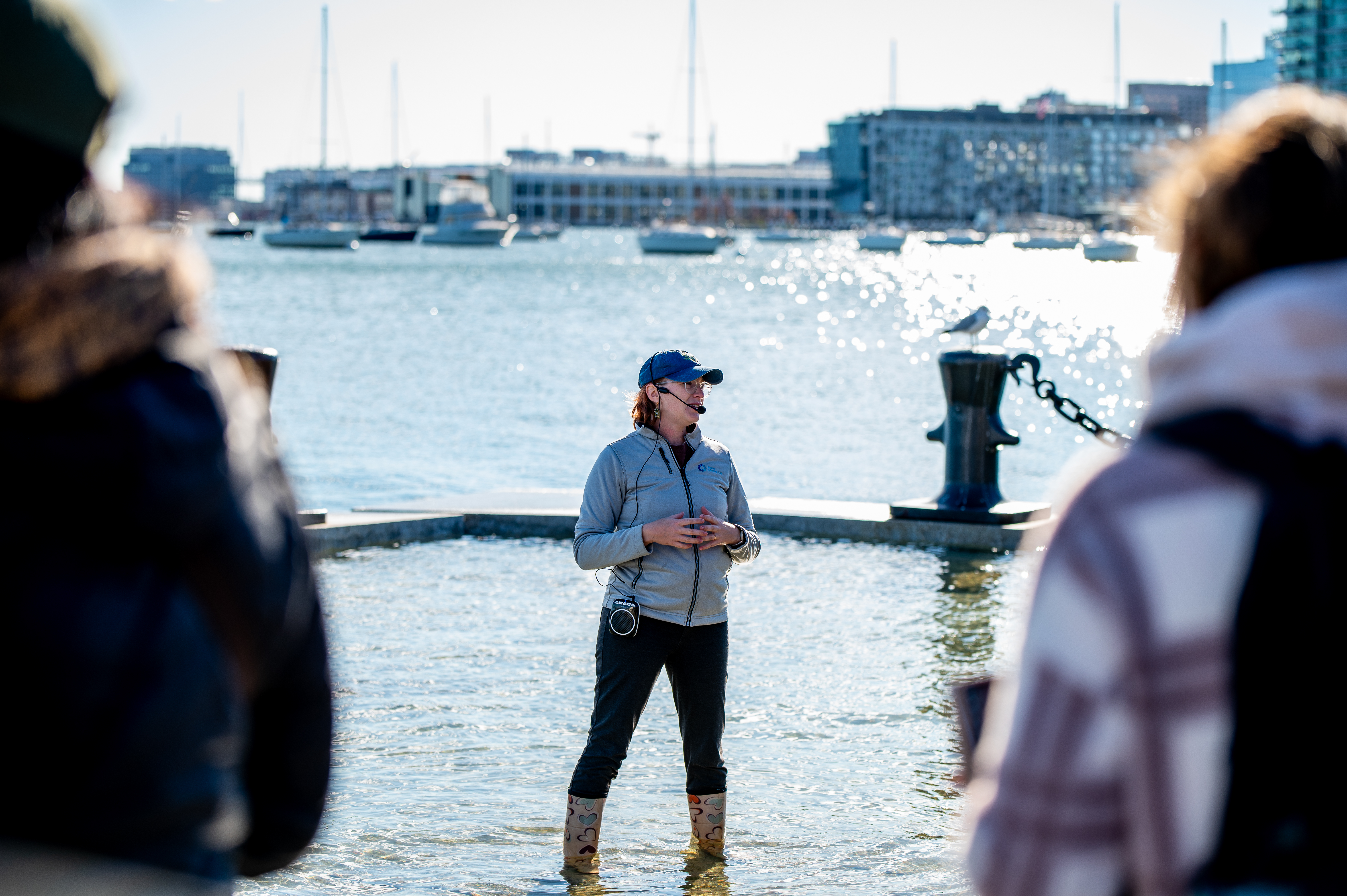Three Years of High Tides


by Rebecca Shoer
Senior Program Manager, Education and Engagement
Sometimes the best programs require the least amount of gear: a pair of rainboots, a microphone, a meter stick. Well, that, and about two feet of seawater.
For the past three autumns, I’ve found myself at the end of Long Wharf in downtown Boston, standing in saltwater, talking with students, tourists, and passers-by as the tide rolls into shore.
Several times a year, Boston experiences the “Perigean spring tide” (what we call “wicked high tides”), when the moon is at its closest orbit and either full or new. In the fall they hit during daylight hours, creating the perfect conditions for environmental learning.

Credit Michael Bozio
One of the things I cherish most about this program is that it gives me an opportunity to share an amazing natural phenomenon with folks as it’s happening in real time. There’s no need for presentation slides or props – the ocean itself arrives and, frankly, demands our attention. People are suddenly given the chance to interact with the sea in a way they rarely get to and likely weren’t expecting to, often with unexpected joy. I’ve watched dogs romp, kids splash, and even a kayaker paddle onto the wharf during these tides. On sunny, calm days, the water shimmers along the granite blocks, turning the hardened shoreline into a mesmerizing aquatic landscape.

Credit Michael Bozio
These lenses of joy and wonder are a crucial piece of this program. Although these tides have been happening as long as there’s been a moon, an Earth, and an ocean, sea level rise brings the water further and further into the city each year. It is incredibly challenging for most of us to imagine what Boston would look like with two, three, or five feet of sea level rise, yet science tells us we could experience that much in the next few decades. And when we do imagine this climate-changed future, many of us struggle to see more than crumbling buildings, displaced families, and failing infrastructure. Who wants to spend time picturing the worst, let alone listen to someone talk to them about it on an autumn afternoon?
This is why these tides are such a gift for me as an environmental and climate educator. The ocean gives us a brief window into what our climate future may very well look like, and shows us that the future doesn’t have to be the dystopia of our worst nightmares. It is certainly undeniable that things will change. Folks are often shocked to learn that some of the water they see is coming up through storm drains, and that the MBTA already utilizes flood barriers around the Aquarium T stop during these tides. There will undeniably come a time when Boston, a place so heavily engineered and manipulated by settlers, will be reshaped once again by greater-than-human forces. And wouldn’t it be something, if instead of living in dread and despair, we could turn ourselves to repair and learning, and embrace this new future?
By no means does this mean we can throw up our hands, and continue barreling towards the global climate crisis that looms ever closer. But instead, as a city built into, onto, and along the water, we can work to welcome the return of the water, create room and spaces to heal our fractured relationship with our coast, and envision a different future than that of the colonists. And for me, it starts with watching the tide roll in, and in, and in, experiencing a new Boston with those around me for a few precious hours.

Credit Michael Bozio